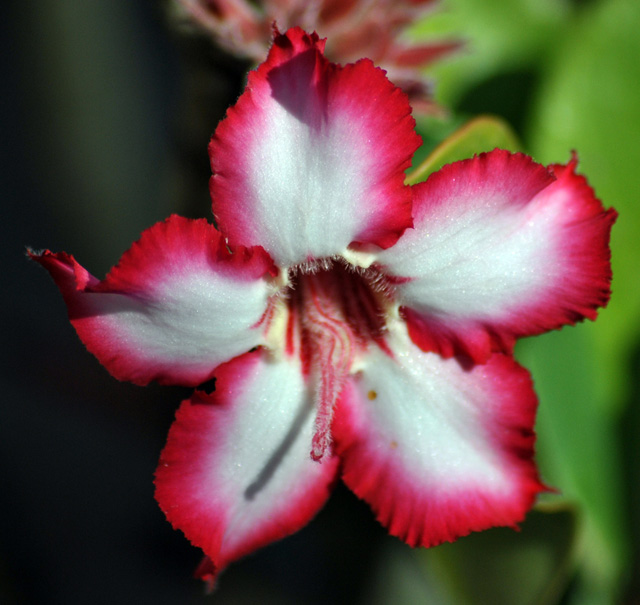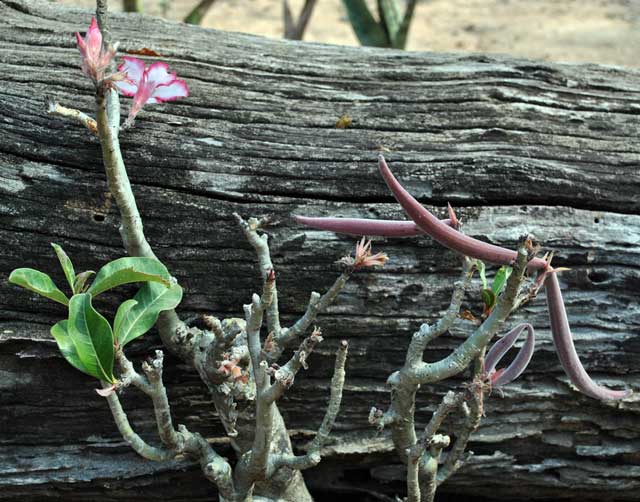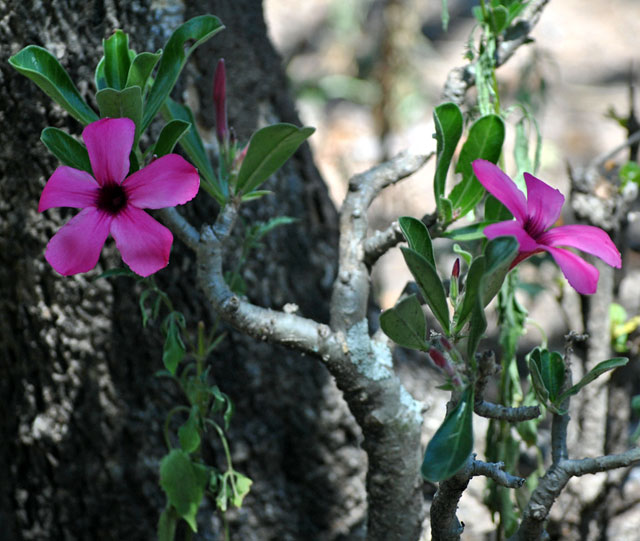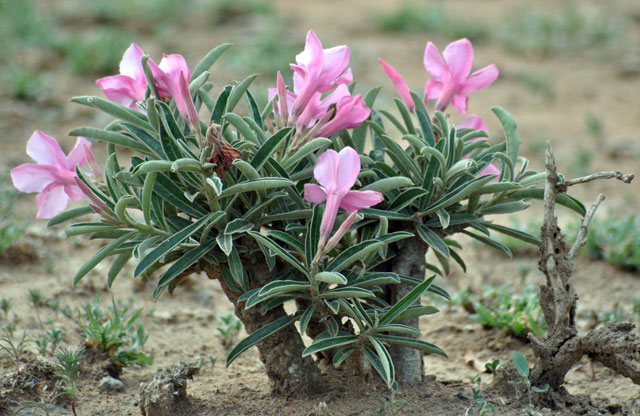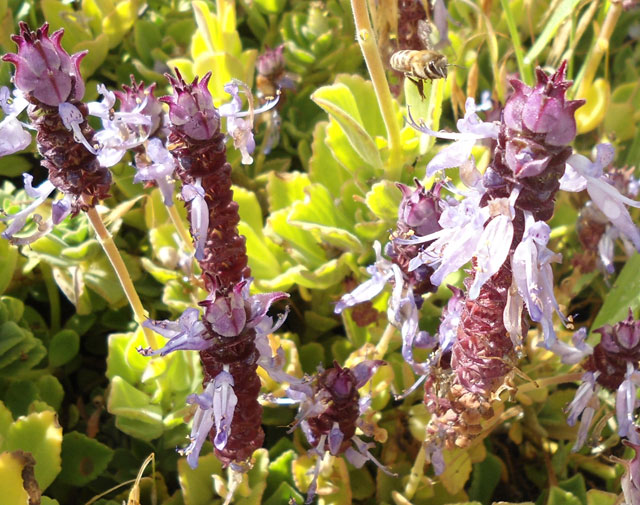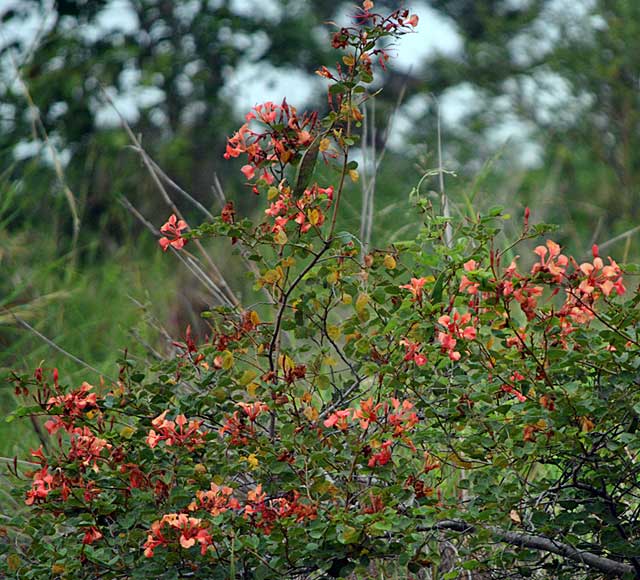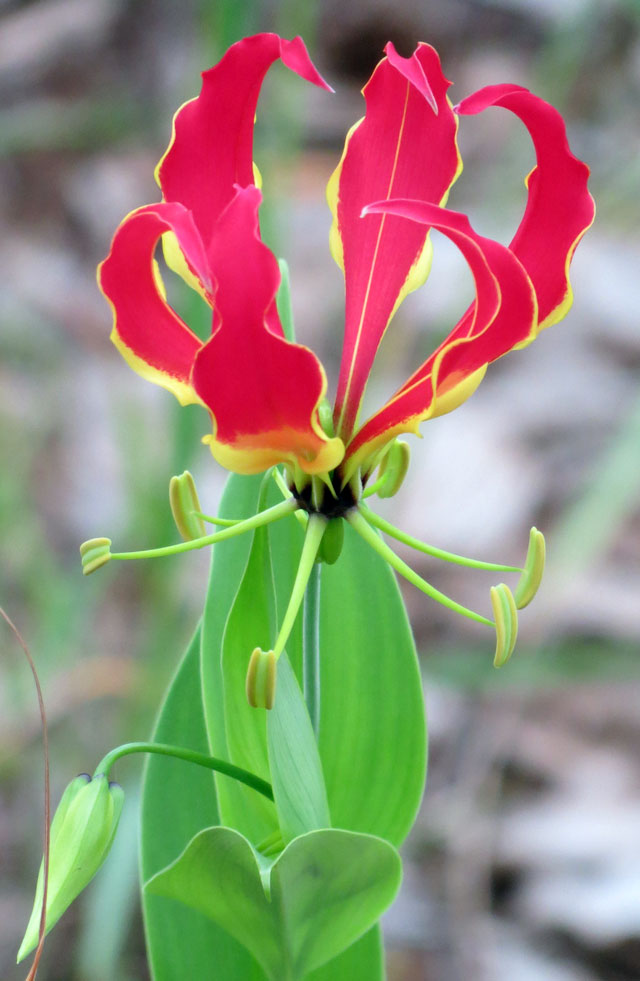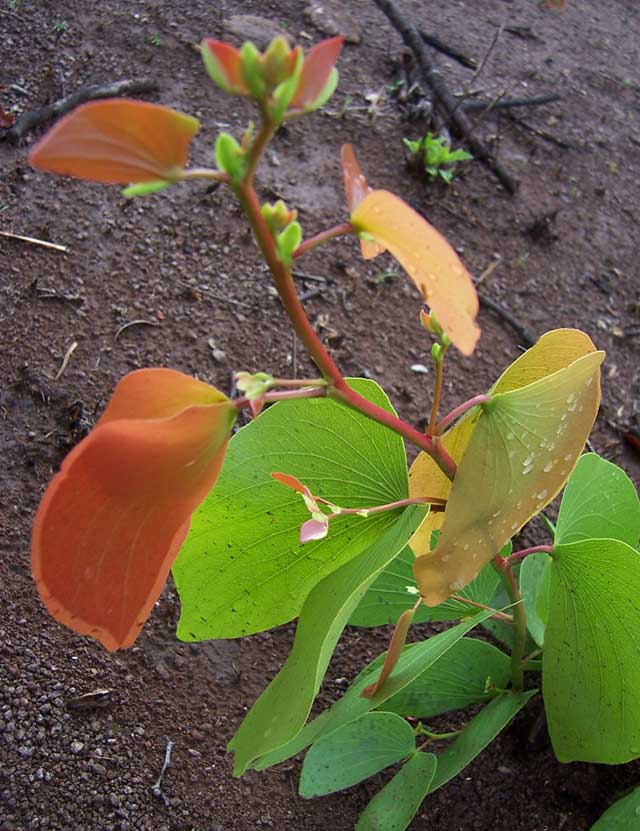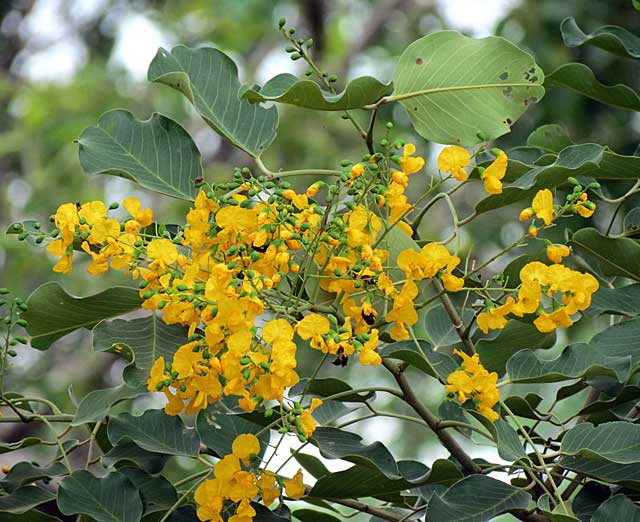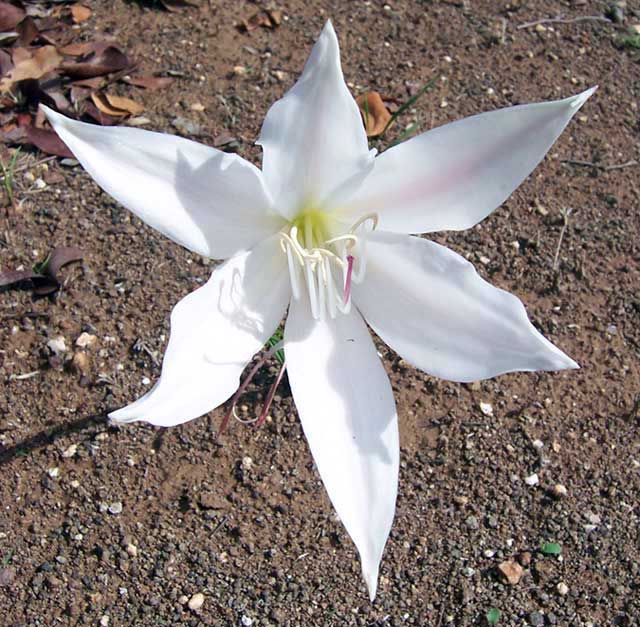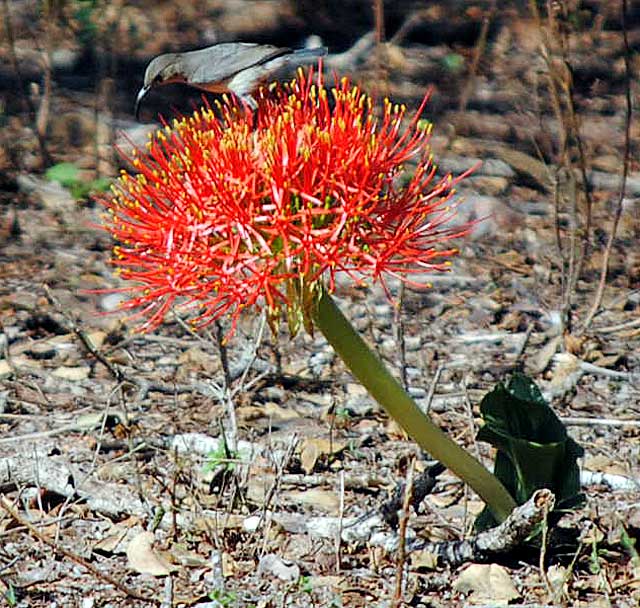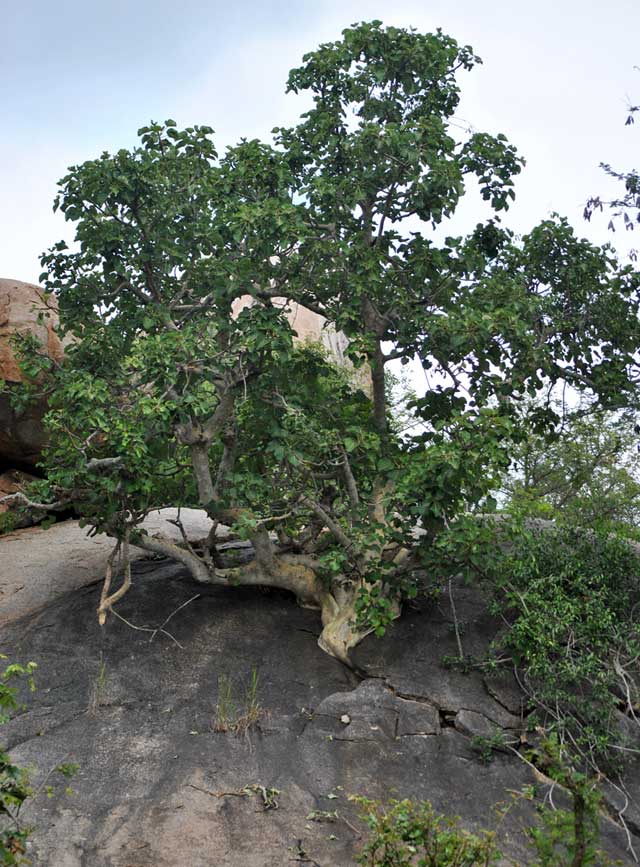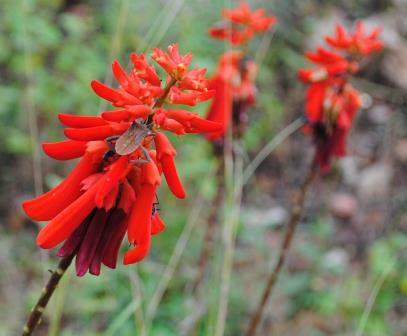They Come in Many Colors
The Camera; a Flower’s Best Friend
The first tentative rains came last night. The timing is right – mid September – now they need to keep coming regularly. While the plight of the wildlife in a drought is well documented, the decimation of the flowering bushveld is a sad and sobering experience.
Surprisingly, the adaptability of the plants is far greater than that of the animals. Here are some of the marvels of the bush, captured over the past year. With steady rains, the flora will spring back with renewed vigor as long as the grasslands have not been too badly overgrazed.
First up is the undisputed star of the bushveld. Well, the stars – because as you will see, there are many variations on this particular theme
The Sabi Star is a whiz at arid region adaptability. It is an Impala Lily, but the winter flowering variant, known in horticultural circles as Adenium obesum. To see these fantastic scarlet and cream flowers bursting out all over the plant’s stocky, grey branches is one of the joys of winter, around these parts.
These are followed by pairs of conspicuous pods, resembling exotic cattle horns, which burst when ripe, releasing hundreds of winged seeds.
The summer flowing impala lily – Adenium swazicum – is no less striking, although it combines its own interpretation of pink with the glorious green of the summer leaves.
The summer impala lily is considered critically endangered and is on the Threatened Or Protected Species (TOPS) list. Sadly these magnificent plants, like many species of wildlife, are subject to heavy poaching along with habitat loss. We took the picture – above- in the Kruger Park and as our specimen was facing the setting sun, we had to be content with the back view of its flowers. Getting out of your vehicle is illegal as well as very stupid, given the abundance of lion and elephant in the region.
Bees love this purple succulent honey flower. The disorderly, flourishing plant will willingly take over bare patches of sandy soil.
The Pride-of-de-Kaap is one of Southern Africa’s best loved and most well-known plants. What many people don’t realize is that it occurs all over the Kruger Park, growing unrestrainedly in the wild, decorating the banks of rivers and scrambling up hillsides.
The Flame lily is an astonishingly beautiful flower, ethereal and somewhat unreal looking in its natural habitat.
The Mopane tree is another flowering bushveld stalwart. Although the flowers are pale, the striking display of young sprouting red leaves, colors vast tracts of bushveld as far as the eye can see. Once seen, never to be forgotten!
This tree is host to the famous Mopane worm.
The round-leaved teak is one of the many bushveld trees adorning the landscape after the rains come. This large tree is a member of the pea family – they get around! It has bright yellow, pea-shaped flowers, which are highly scented and have attractive crinkled petals.
One of a large family of beautiful lilies, the dwarf crinum also occurs naturally in Namibia, Zimbabwe, Zambia and Botswana.
Perhaps one of the most dramatic flowers in the veld, the snake lily springs up from a small rosette of leaves and quickly makes an inflorescence up to 200mm (8 inches) across. This eventually produces a large red fruit but the one we have observed, from year to year, is eaten before it can produce fruit. Last year, due to the drought, our specimen never flowered.
A little while before this plant flowers, the bud and the stem resemble a green mamba, ready to strike, hence the name “snake lily.”
This large-leaved fig tree is growing out of a smooth rock about four meters up near the very top. The leaves are huge and heart shaped and the fruit is a favorite with monkeys, baboons, duiker, nyala and bushpig. Although the flowers don’t account for much, the tree provides some dramatic greenery in our flowering bushveld.
*Did you spot the “bonus” in the snake lily image? That’s a red-chested sunbird female.

